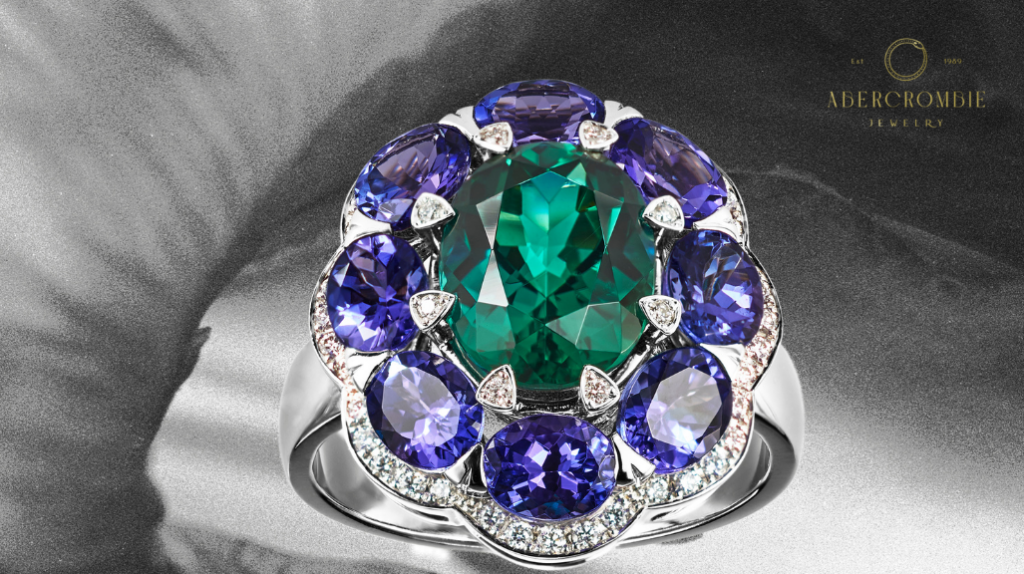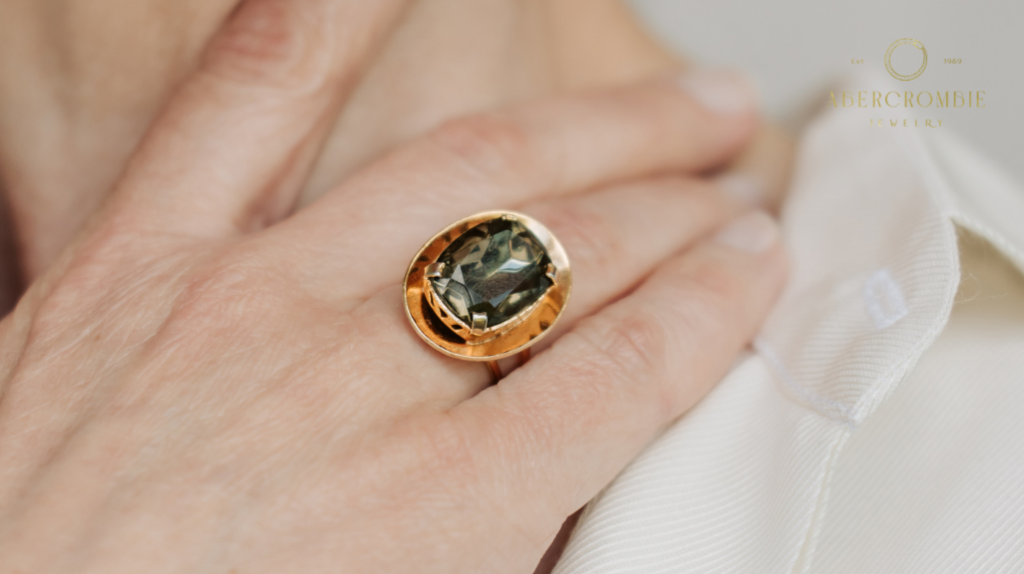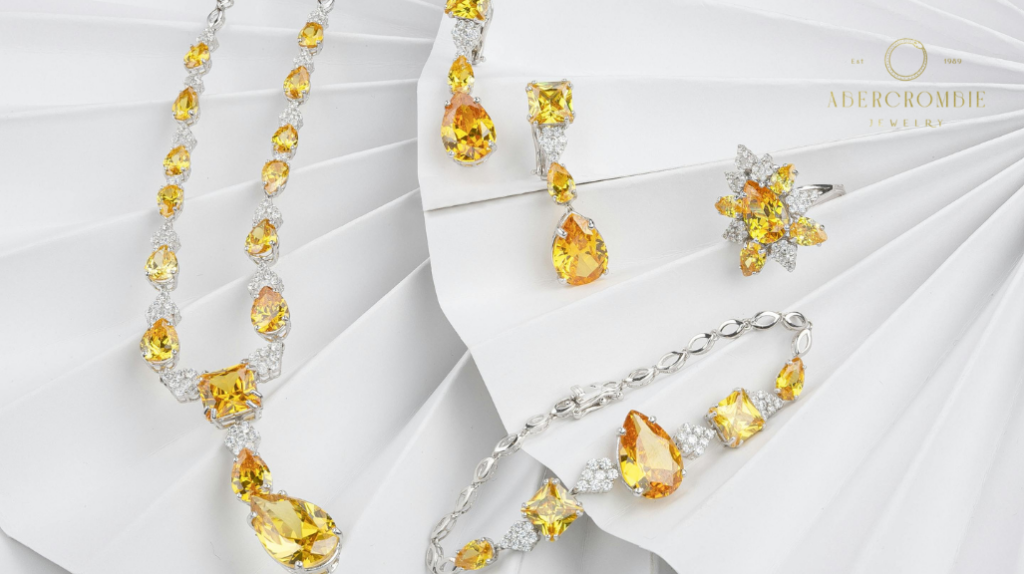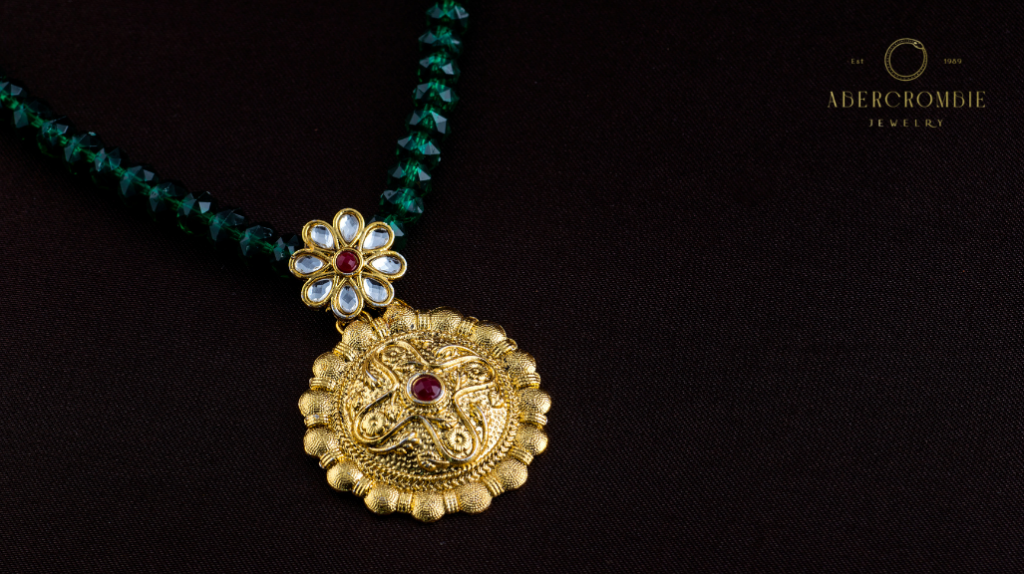When evaluating consignment jewelry, you’ll encounter several key factors influencing value. Gemstone quality, including color grading and certifications, plays a pivotal role, as vibrant, authenticated stones fetch higher prices. What are the factors affecting the value of consignment jewelry? The metal type, especially rarer or more durable metals like platinum, greatly impacts desirability. Intricate craftsmanship, reputable brands, and pieces from notable eras bolster value. Current market trends, rarity, and provenance, including historical significance or celebrity connections, also heighten demand. Condition is essential; well-maintained pieces with original packaging and minimal wear are more attractive. Abercrombie Jewelry will explore these elements, providing deeper insights into maximizing jewelry value.
Key Takeaways
- Gemstone Quality: Vibrant colors, clarity, and GIA certifications significantly enhance the value of consignment jewelry.
- Metal Type: Precious metals, especially platinum and high-karat gold, increase desirability and market value.
- Craftsmanship: Intricate designs and high-quality finishes reflect superior craftsmanship, boosting appeal and price.
- Brand Name: High-reputation brands and exclusive designer collaborations command higher prices.
- Condition: Minimal wear and tear, original packaging, and proper maintenance history positively impact the jewelry’s value.
Next blog: Top Questions to Ask Your Jewelry Buyer Before Selling Your Pieces
Gemstone Quality

The gemstone quality is one of the most critical factors when evaluating consignment jewelry. It greatly impacts the piece’s overall value. First, consider color grading. Gemstones are graded on a scale that assesses their hue, tone, and saturation. A gemstone with vibrant, evenly distributed color is generally more valuable. For instance, a deep blue sapphire or a vivid green emerald can markedly elevate a jewelry piece’s worth.
Next, don’t overlook gemstone certification. Reputable certifications from organizations like the Gemological Institute of America (GIA) provide a detailed analysis of the gemstone’s characteristics. This certification provides confidence about the gemstone’s authenticity and quality, making establishing trust with potential buyers easier. Certified gemstones tend to fetch higher prices in the market due to the credibility and transparency the certification offers. Market trends also affect gemstone desirability. Keeping an eye on popular gemstones can guide your purchasing decisions. Currently, gemstones like blue sapphires and pink diamonds are highly sought after.
Metal Type
Evaluating the metal type in consignment jewelry can greatly impact its value and marketability. When examining a piece, consider both metal durability and rarity. Durable metals like platinum and stainless steel withstand wear and tear, making them more attractive to buyers seeking lasting quality. Their resilience translates into long-term value, ensuring that your investment remains sound.
On the other hand, metal rarity is essential in determining a piece’s worth. Precious metals like gold, particularly in higher karats, and platinum aren’t only durable and rare. This rarity enhances their desirability and market value. Consignment jewelry featuring these metals commands higher prices and enjoys faster turnover in the market. Staying educated about current market trends can also guide your decisions. For instance, rose gold has grown in popularity, driven by its unique hue and relative rarity compared to traditional yellow or white gold.
Craftsmanship

While the metal type lays the foundation for a piece’s value, craftsmanship elevates it to a new level. When you examine consignment jewelry, you’ll notice that the intricacies of design techniques and artistic influence can significantly impact its market value. Expert craftsmanship isn’t just about how well a piece is put together; it also encompasses the creativity and skill in its creation.
Consider these elements of craftsmanship:
- Detailing: Fine details can set a piece apart, demonstrating the jeweler’s skill and dedication.
- Symmetry: Balanced designs reflect a high level of precision and care.
- Finish: A polished, seamless finish indicates superior craftsmanship.
- Innovation: Unique design techniques can make a piece more desirable and valuable. The current market has a growing appreciation for pieces that reflect technical proficiency and artistic influence.
Collectors and buyers often seek jewelry that tells a story or showcases a jeweler’s unique style. Focusing on craftsmanship can help identify beautiful pieces that are likely to hold or increase their value over time. The true artistry in jewelry can often be found in the details, making it a key factor in determining worth.
Brand Name
In today’s jewelry market, the brand name often plays a key part in determining the significance of consignment pieces. A strong, reputable brand can greatly elevate a piece’s worth, attracting discerning buyers who seek prestige and quality. When a brand has a history of designer collaborations, its pieces often garner more attention and higher prices.
Here’s a breakdown of how brand factors influence value:
| Factor | Impact on Value |
| Brand Reputation | High reputation boosts value |
| Designer Collaborations | Increases desirability |
| Market Demand | Higher demand raises value |
| Brand Exclusivity | Limited editions add value |
| Historical Significance | Enhances collector interest |
Brand reputation is paramount. A brand known for its craftsmanship and timeless designs can command higher prices. Designer collaborations with renowned artists or celebrities amplify this effect, making the pieces even more sought-after. Market trends show that exclusive brands with limited editions or unique designs often create a sense of urgency and desire. Collectors and fashion-forward individuals are willing to pay a premium for such pieces. Comprehending these nuances can help you navigate the consignment jewelry market more effectively, ensuring you recognize and capitalize on valuable opportunities.
Age and Era

Understanding the age and era of consignment jewelry is essential in determining its value. When you evaluate a piece’s age, you’re not just looking at its age; you’re delving into the history and design influences that shaped it. Each era brings unique charm and craftsmanship, contributing to the vintage appeal many collectors and enthusiasts seek.
Consider these key factors:
- Historical Context: Jewelry from certain periods, like the Victorian or Art Deco eras, often contains elements reflecting the socio-political climate of the time, making them highly sought after.
- Craftsmanship: Older pieces were often handcrafted, a detail that considerably boosts their value compared to modern, mass-produced counterparts.
- Material Quality: The quality of metals and gemstones used in different eras can vary widely, influencing the jewelry’s durability and desirability.
- Design Trends: The design influences of each era, from the complex lattice of the Edwardian era to the daring geometric shapes of the Art Deco movement, add to a piece’s unique charm and marketability.
Market Trends
Market trends play a pivotal role in defining the value of consignment jewelry. As someone keen on understanding this dynamic, you should recognize that current demand and pricing fluctuations greatly influence how much a piece is worth. When certain styles or materials become fashionable, the demand for jewelry featuring these elements rises, driving its value. For instance, if vintage pieces from a specific era suddenly gain popularity, their market value will soar accordingly. Pricing fluctuations are another key factor. Jewelry markets aren’t static; they ebb and flow with broader economic conditions and consumer preferences. During economic downturns, luxury items often dip in demand, causing prices to drop. Conversely, in booming economies, people are more willing to invest in high-end pieces, pushing prices higher. Anyone involved in consignment jewelry must stay updated with these trends. Joining specialized online forums, attending industry trade shows, and following market reports can provide invaluable insights.
Condition

When evaluating consignment jewelry, you’ll find that the condition considerably influences value. Pieces with minimal wear and tear and those still in original packaging often command higher prices. Collectors and buyers place a premium on items that appear well-maintained and retain their original presentation.
Wear and Tear
The condition of consignment jewelry, often encapsulated by the term “wear and tear,” plays a vital role in determining its market value. Well-maintained pieces, reflecting minimal signs of use, attract higher prices. Different design styles respond uniquely to wear; for instance, intricate designs might show damage more prominently than simpler ones. Consequently, understanding how to care for various styles is essential. Effective maintenance practices can greatly mitigate wear and tear. Regular cleaning, proper storage, and periodic professional inspections are essential.
Be mindful of the following factors that influence the condition and, as a result, the value of consignment jewelry:
- Scratches and Dents: Even minor surface imperfections can reduce appeal and value.
- Loose Stones: Secure settings are necessary; loose or missing stones drastically lower desirability.
- Tarnishing: Metals like silver and gold can tarnish without proper care, impacting their shine and worth.
- Clasp and Chain Integrity: Functional and sturdy clasps and chains are critical for wearability and value retention.
Original Packaging Condition
Though often overlooked, the condition of the original packaging greatly impacts the value of consignment jewelry. Maintaining the original packaging can add significant value when you consign your jewelry. Collectors and buyers often attach sentimental value to items in their original boxes, enhancing their authenticity and provenance. Pristine packaging suggests that the jewelry has been well-cared for, which can instill confidence in potential buyers. The current market indicates a growing preference for complete sets, where the jewelry and its packaging are preserved together. Original packaging also serves as a tangible connection to the brand’s heritage, appealing to those who appreciate the story behind each piece. For instance, a vintage Cartier bracelet in its original red box can command a higher price than one sold without it. Additionally, original packaging can protect the jewelry during transit and storage, reducing wear and tear. This preservation helps maintain the jewelry’s condition, further boosting its market value. Consequently, if you’re considering consigning your jewelry, don’t underestimate the importance of original packaging. This small detail can greatly affect sentimental value and market appeal.
Rarity
A key determinant of consignment jewelry’s value is its rarity. Rare pieces often have unique designs and an intrinsic cultural significance that sets them apart. Understanding the rarity can give you a significant edge in determining its true market value when evaluating consignment jewelry.
Consider the following to assess rarity effectively:
- Limited Editions: Jewelry produced in limited quantities often holds higher value due to scarcity.
- Period Pieces: Items from specific historical periods, such as Victorian or Art Deco, are usually rare and sought after.
- Artisan Craftsmanship: Handcrafted pieces with intricate, unique designs typically stand out and are less likely to be mass-produced.
- Cultural Significance: Items that embody cultural heritage or are linked to significant events or traditions have a higher value.
Market trends show that collectors and buyers increasingly seek pieces that reflect unique designs and have a sense of history and cultural significance. Identifying these characteristics in consignment jewelry helps you connect with a community that appreciates the aesthetic value, story, and craftsmanship behind each piece. This connection enables a sense of belonging and appreciation among like-minded enthusiasts.
Provenance

Understanding provenance is essential because historical ownership records can greatly boost a piece’s value. If a celebrity once owned the jewelry, its market appeal and price often skyrocket. Documented authenticity proofs further solidify its worth, giving buyers confidence in their investment.
Historical Ownership Records
Historical ownership records or provenance play a pivotal role in determining the value of consignment jewelry. Provenance provides a tangible connection to the jewelry’s past, establishing its historical importance and ownership lineage. Collectors and buyers often seek pieces with rich histories, as these elements greatly impact the market value.
Consider the following factors when evaluating provenance:
- Historical Importance: A piece linked to a specific historical event or era can amplify its desirability and worth.
- Ownership Lineage: Clear documentation of previous owners adds authenticity and value, especially if the owners were notable figures.
- Condition Over Time: Understanding how well a piece has been maintained across different ownerships offers insights into its longevity and durability.
- Market Trends: Provenance can sway market trends, with pieces from certain periods or owners seeing heightened demand.
As a discerning collector or seller, you should prioritize thorough documentation and verification of provenance. This enriches the narrative surrounding the jewelry and guarantees its place within a community that values historical depth and authenticity. Provenance transforms a mere accessory into a storied artifact, appealing to those who seek more than just material beauty in their acquisitions.
Celebrity Connections Impact
It’s undeniable that celebrity connections can greatly impact the value of consignment jewelry. When a famous personality has worn a piece, it’s not just a piece of jewelry; it’s a slice of cultural history. Celebrity endorsements elevate a piece’s perceived value and desirability, often leading to higher bids during auctions. Take, for example, the auction history of jewelry worn by Hollywood icons like Elizabeth Taylor or Audrey Hepburn. These pieces fetch astronomical prices not just for their craftsmanship but because they’re imbued with the star’s glamour and legacy. Buyers feel a sense of belonging to an exclusive club, owning something that once graced a red carpet or a major film premiere. Market trends show a consistent spike in value when jewelry is associated with contemporary celebrities, too. Pieces endorsed by modern stars like Beyoncé or Rihanna often see a significant appreciation in value. Collectors and fashion enthusiasts are willing to pay a premium to own a piece of that star power.
Documented Authenticity Proofs
While celebrity connections can boost a piece’s allure, documented authenticity proofs or provenance are equally important in determining consignment jewelry value. Provenance serves as a crucial backbone, validating the history and legitimacy of your jewelry. When you want to consign, ensuring that your piece meets certification standards and has undergone rigorous appraisal processes will set it apart in the marketplace.
Here are some key factors to evaluate:
- Historical Documentation: Records of previous ownership, especially if they include prominent figures or significant events, can elevate a piece’s value.
- Certificates of Authenticity: Documents from recognized gemological laboratories confirm the quality and origin of the gemstones and metals.
- Appraisal Reports: Professional evaluations that determine the current market value based on condition, rarity, and craftsmanship.
- Photographic Evidence: High-quality images that provide visual proof of the jewelry’s condition and unique characteristics.
Frequently Asked Questions
Conclusion
In evaluating consignment jewelry, remember that rarity can greatly influence value. Did you know that vintage pieces from the Art Deco era have surged in demand by 30% over the past decade? This trend underscores the importance of age and era in market valuation. Always consider factors like gemstone quality, metal type, and brand name. You can make savvy decisions in the consignment jewelry market by staying informed on market trends and paying attention to craftsmanship and condition.

